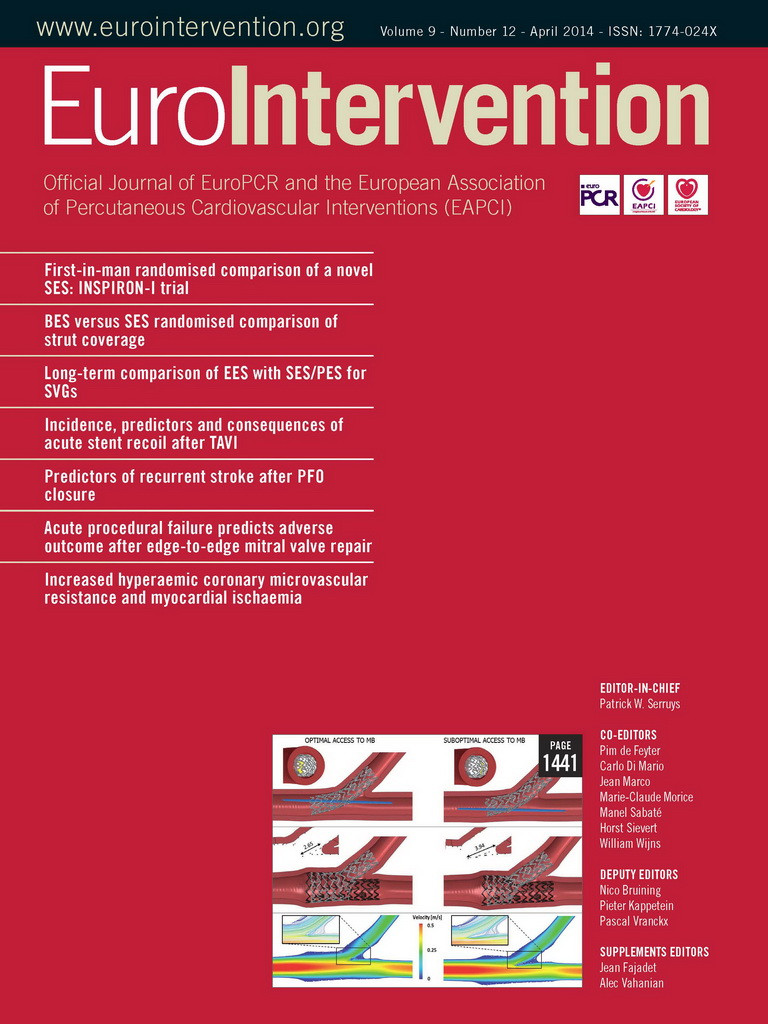A detailed analysis of the history of medicine is not necessary to understand the large breadth of South American contributions to the development of new techniques and technologies for the treatment of cardiovascular disease. The courage and pioneering spirit of dedicated professionals was the prime motivating force behind the integration of the continent in this domain. Initially, our participation was expressed in the context of cardiovascular surgery when in 19661 Rene Favaloro proposed using saphenous grafts for myocardial revascularisation through coronary arteries blocked by atherosclerosis. In another luminous and visionary moment, Dr Adib Jatene2 proposed and then realised a new technique for transposition of the great vessels (switch operation), which was acclaimed and received as the most suitable treatment for children and neonates with this severe form of congenital heart disease. Almost like a transition in treatment modalities, Dr Juan Parodi’s3 efforts to envision the possibility of extending the endovascular treatment of abdominal aortic aneurysm deserves our respect and admiration. The great shift of cardiovascular medicine from surgical to endovascular treatments demonstrated our ability to innovate with an even greater vigour. The history of coronary stents saw its early success in Sao Paulo, Brazil when Dr Eduardo Souza4 and his team first performed implantation in the human coronary artery of the Palmaz-Schatz stent –with the aid of Dr Julio Palmaz of Argentina. And they were responsible, as well, for initiating the development of the device and its implantation in previously peripheral vascular territory. Building from these early foundations, and in line with the latest technological developments, we have seen the greatest revolution in invasive cardiology taking place at The Dante Pazzanese Institute of Cardiology (IDPC). It was here that Dr Souza5 conducted and published the FIM Cypher study, leading the way in the field of effective implantation and safety of sirolimus-eluting stents in the coronary tree. Since then, every year, the South American continent’s participation has been growing with Dr Alex Abizaid of the IDPC conducting several FIM studies testing technology that will not be available for some years.
The ability of our institutions and researchers to contribute also encompasses important responses to current clinical practice. Last year, with the publication of the OPTIMIZE study, which included the prospect of reduced time for safe dual antiplatelet therapy after implantation of drug-eluting stents, Dr Fausto Feres6 brought this important issue to debate, a topic which deserves further comments in the coming years.
In this issue of EuroIntervention, INSPIRON-I, a South American FIM study is being published, whose great originality is not limited to it being the first study in humans with this particular device. In fact, the whole production technology and research was developed in Brazil itself, where the production line uses intellectual, human and material resources comparable to centres and industries of first-world countries.
Combining the requirements of stents available in the second and third generations, which include the alloy cobalt-chromium, abluminal biodegradable polymer coverage and the most effective drug class available (sirolimus), we are surely looking at a serious competitor to the more established pharmacological stents available on the market today.
The study results of INSPIRON-I7, where this new biodegradable device (Inspiron) is tested in a 2:1 randomisation model against its metallic analogue (Cronus), offer evidence of its ability to reduce neointimal hyperplasia. This has been done by analysing the late loss at six months (0.19 mm±0.16 vs. 0.58±0.4 mm, respectively, p<0.001) comparable to various drug-eluting stents in other study indexes. Looking at late loss, the first-generation stents showed rates of 0.1 to 0.4 mm, while second- and third-generation showed rates of 0.1 to 0.2 mm. This allows us to conclude that the Inspiron device is comparable to stents currently used worldwide. However, we have learned from previous studies that late lumen loss is only one of the features of DES related to its efficacy. In fact, a balance between efficacy and safety is the most important characteristic of a DES and can only be evaluated in the long-term follow-ups associated with very well-powered randomised studies or large registries.
Still, we have seen at two-year follow-up that there was lower target lesion revascularisation for Inspiron (0 vs. 21.1%, respectively; p=0.01) and no stent thrombosis.
One important step will be the comparison of this device to another with similar characteristics. In the Destiny Trial8, Inspiron™ is being tested against the Biomatrix™ stent, also a DES in which the biolimus drug is eluted in a biodegradable polymer. At present, patient recruitment has been completed, and we look forward to seeing the final results.
Do these INSPIRON I trial results mean that we have come to the winner’s podium?
Certainly not…yet.
As we said above, further studies should follow the INSPIRON-I, with larger, real-world patient populations, sufficiently powered to assess clinical outcomes. We expect these to be in the near future in order to ensure this stent’s unrestricted applicability in our clinical practice.
For now, we wish to salute Dr Expedito Ribeiro and all the others involved in this project, including The Scitech Company that produces this device. We are proud of the leading role of our continent in innovations and innovators, proud of their commitment to the advancement of our clinical practice, a commitment that goes far beyond South America, offering world-class products, practices and cutting-edge technologies for the benefit of doctors and patients internationally.
Conflict of interest statement
The authors have no conflicts of interest to declare.

